Wildflower Meadows have their day in the sun today, on National Meadows Day. National Meadows Day is a new thing, just a few years old, but it seems to have captured the public’s imagination and rightly so. Because Wildflower Meadows encapsulate a beautiful coming together, of people and nature, creating something sublime, which everyone can enjoy.
Wildflower Meadows have been around for thousands of years, and their origins are the glades and pastures created by wild animals as they grazed and browsed their way through the landscape when people were just another animal, making their mark, but not controlling the landscape to the extent we do now.
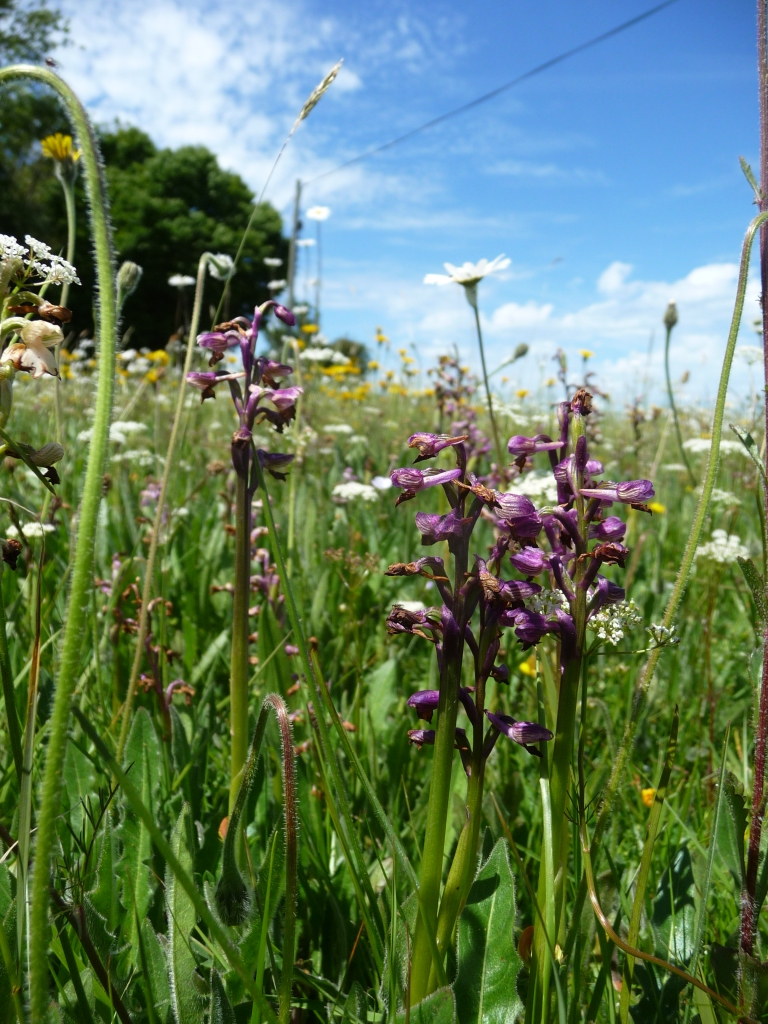
Once people started raising domestic livestock they realised that they needed some way to conserve food for animals to keep them alive over the winter – and the idea of mowing and storing hay was born. It’s not entirely clear how long ago this happened, but there is some evidence that it was happening in the Bronze Age. Certainly by the Iron Age meadows were an important component of the farmed landscape and by the 1600s the horse was the main source of power for farming and transport, ushering in a golden age of hay meadows. This continued through to the 1950s when mechanisation (spurred on by the needs of the Second World War) brought in the tractor. As the farm horse disappeared, so did the need for all those hay meadows. Hay needed for cattle was replaced by silage and by 1980, 97% of England’s flower-rich hay meadows had gone, replaced by arable farmland or the modern “improved” grasslands of Perennial rye-grass and White clover.
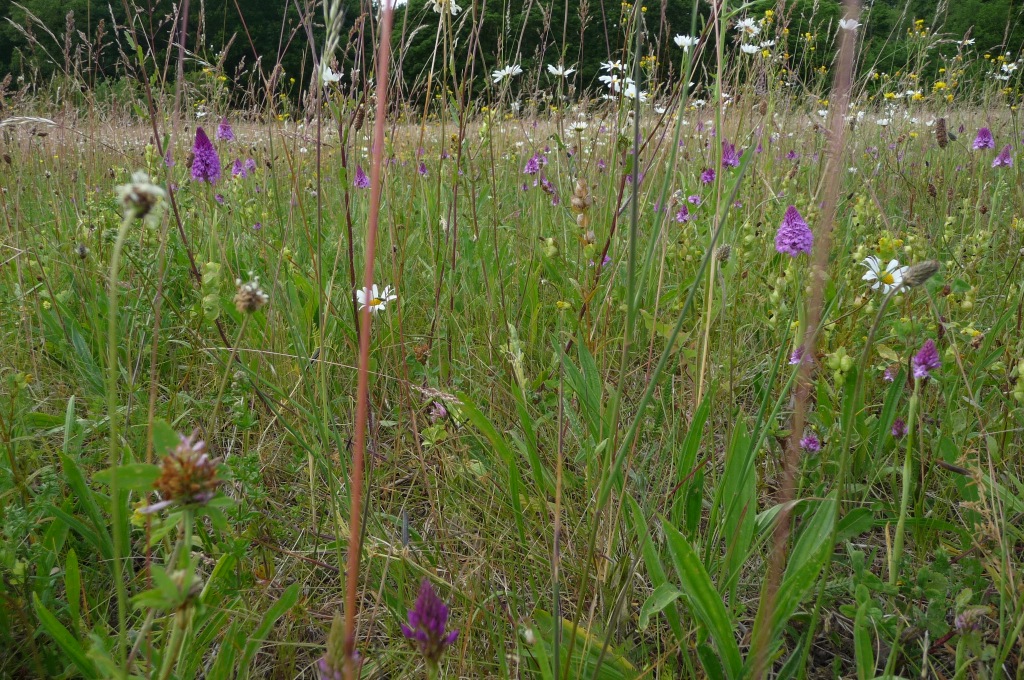
By 1985 the wave of agricultural intensification of the “green revolution” that had spread throughout Britain from the 1950s onwards had almost reached deepest, darkest West Dorset. In the remote hamlet of Lower Kingcombe, Arthur Wallbridge, who had resisted the shift towards pesticides and fertiliser, hedgerow removal and re-seeding with Rye-grass, died aged 94. The farm was put up for sale to pay death duties. Local conservationists realised that Kingcombe was an extraordinary survival – a survival of the kind of ordinary countryside that existed right across England just a generation previously, but was now all but gone, vanished in the blink of an eye. Hay meadows sat alongside ancient hedgerows and flowery pastures, ponds teeming with life, strange little bogs and flushes, ancient coppices and chalk downland, all cheek by jowl, spreading across the valley of the little River Hooke.
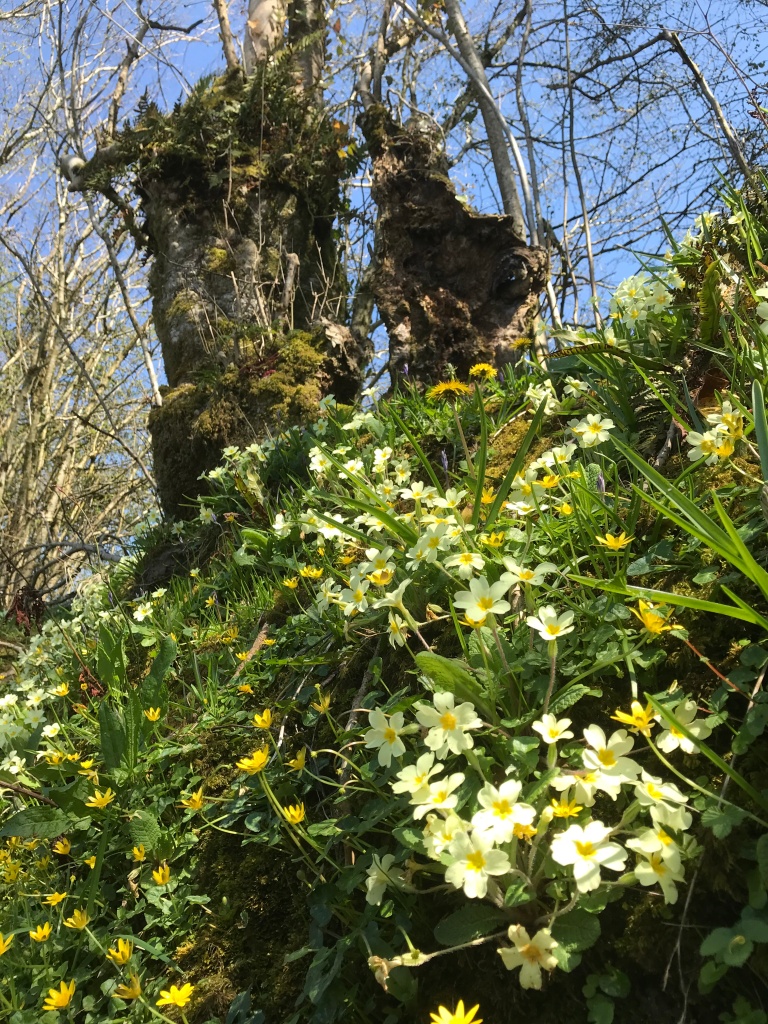
Celebrating a conservation success
Most of the farm was saved one way or another, with a large chunk bought by the Dorset Trust for Nature Conservation (now the Dorset Wildlife Trust) and other individuals buying what they could afford. The farm buildings became the Kingcombe Centre, an amazing environmental education centre run on the shoe string of a shoe string by the indomitable Nigel Spring. You can read more about this story here .
Now the centre is part of the Wildlife Trust reserve, which has expanded with the purchase of more land. Yesterday, Kingcombe and its neighbouring reserve Powerstock Common celebrated receiving a badge of honour from the Government’s nature agency Natural England, by becoming a National Nature Reserve. National Nature Reserves are the jewels in the crown of nature across England. Many are owned and managed by Natural England, while others are in the hands of nature charities such as the Wildlife Trusts – and some are privately owned. Originally NNRs were created as places where scientists could carry out vital research into the ecology of threatened species and habitats, and more fundamental questions about nature and the environment.
Nowadays they are as much there for people to visit and enjoy nature – and this has particularly come into focus during the Covid pandemic when so many have found solace, calm and joy in nature amidst so much suffering and loss. But are these really the right places to encourage large numbers of people to visit, especially when they are in remote locations such as Kingcombe, with no public transport and limited parking?
Making a New Meadow
The children from Damers School, a year one class (six year olds) were tremendously excited. This was the first school trip beyond the school grounds in well over a year, because of the pandemic. We walked out of the school, across the “Great Field”, crossed a minor road and were suddenly, inextricably, in the countryside.
“Yes the cows will be fine, just walk quietly and quickly up to that gate, and watch out for the nettles”, I could hear myself say.
I’d checked with the farmer which side of the fence the cows would be that day. We were going to Poundbury hillfort to collect seeds of the Bulbous buttercup. The children were to collect the seeds, propagate them and then plant out their little bulbs into the new meadow. The new meadow had already been sown with wildflower seed and yellow-rattle and was starting to take shape. I wanted the school children to feel a sense of belonging, that this was their meadow, and what better way than getting them to grow flowers, plant them out and watch them grow.

We looked down into the Frome Valley across the hillfort ramparts and started our search for buttercups. I think the teachers were a bit shocked when I said that it was fine for the children to pick the flowers, but the children’s faces lit up. Soon they had armfuls of buttercups flowers. First we found creeping buttercup in a damp hollow, then Meadow buttercup on the shallow slopes with a bit of soil, before descending to the chalk and the Bulbous buttercups.
“Is this one, Is this one?”
“Look! I found one with a bulb on it” said a triumphant boy holding half a bulbous buttercup bulb. I considered mentioning how these little bulbs had been boiled and consumed as famine food in mediaeval times, then thought better of it. Then the job of the day had to be done, collecting the seed. Frantic seed collecting ensued, with much shouting and running around, gleeful shrieks of “Found it” and the bag I’d brought quickly filled up.
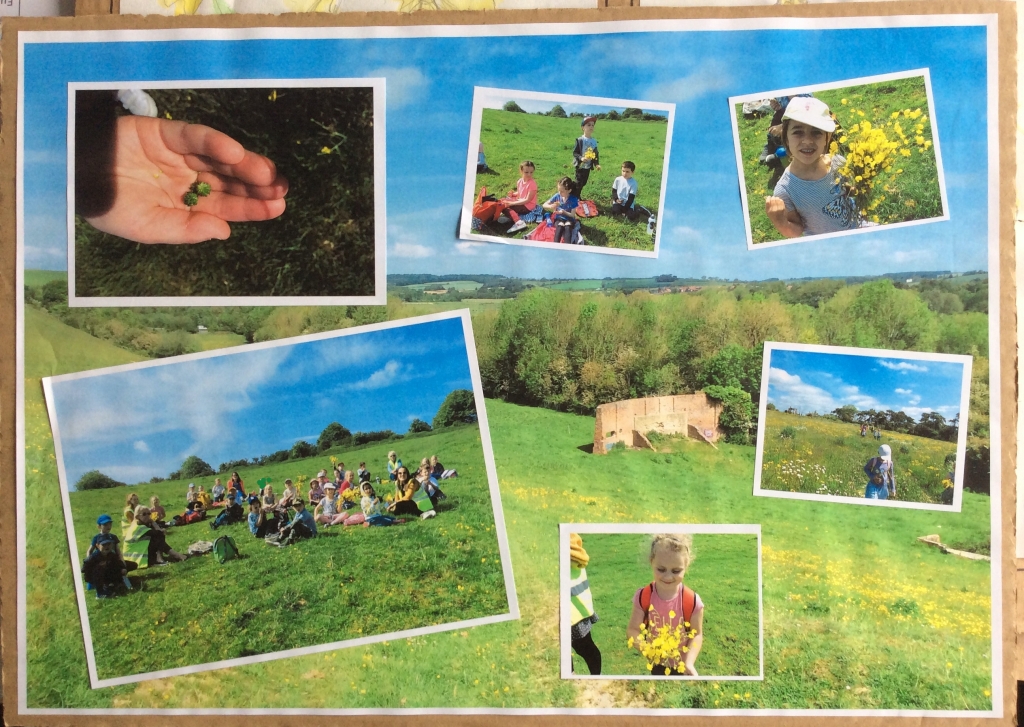
It felt like we’d just got there and it was time to return to the school. The children looked elated, just to be outside. In the sun, in amongst the flowers, their curiosity beaming out them, asking fantastic questions, soaking up knowledge and understanding. The teachers and helpers were equally thrilled to see the children so happy, to have forgotten about all the difficulties the pain and the loss of the year gone by.
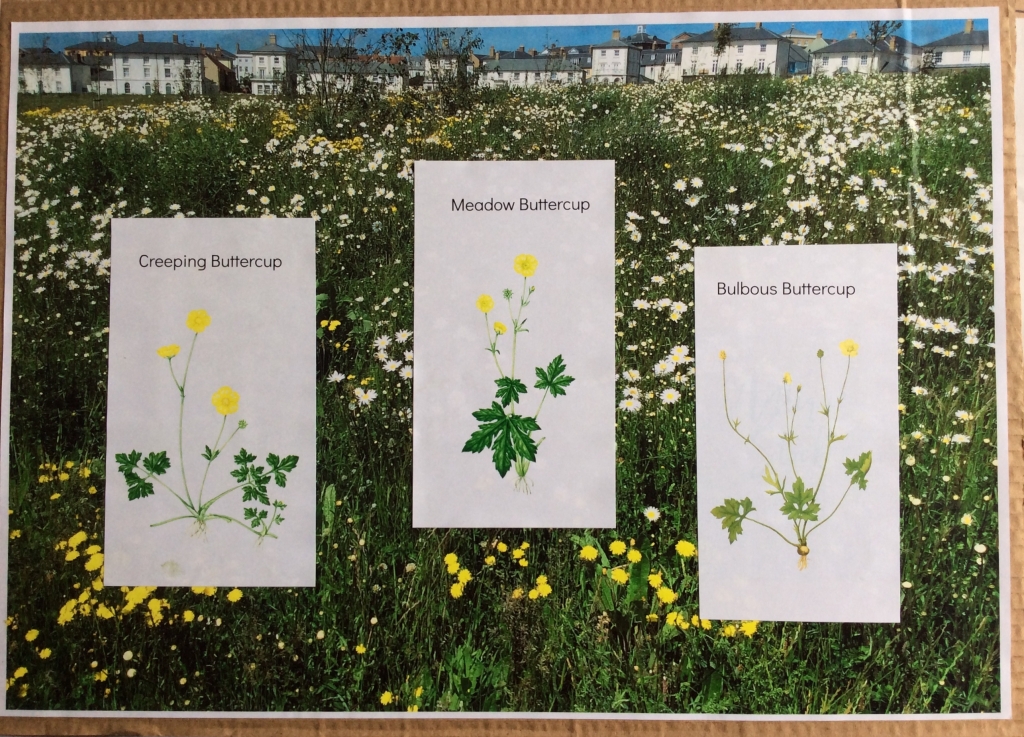
The next day Poundbury received a visit from HRH the Prince of Wales, who had helped write the Harmony curriculum which the school uses – a curriculum which places nature at the heart of their learning. A small group of the Buttercup collectors, with the boards they had created to tell the story of the Buttercup hunt, met the Prince. He was enchanted. One girl gave him a cornflower, she had found in one of the new wildflower areas. “It’s my favourite flower” said the Prince, accepting it from her. The Prince and his entourage moved on, the children (and their parents hovering nearby) elated.
Two other classes are collecting Lady’s bedstraw (cuttings) and Cowslip seeds from nearby wildlife sites, to grow on and plant out in the new Meadow, into their Meadow. It’s surrounded by houses. Already locals and visitors alike are commenting on how lovely the flowers are. It’s just a couple of years old, but already wildlife is arriving. A resident brown hare finds plenty of cover. Skylarks sing overhead. Small blue butterflies have already found their way to the Kidney vetch sown just 18 months ago.
Meadows have morphed – from places created to keep animals alive through the winter, or to fuel the horse-powered economy. Their economic purpose has gone, but now they fulfil a different need, one that is just as vital – the need within us all to be in nature, to enjoy its colours, its sounds, its smells, all of it. The children understand this implicitly, fundamentally, without any need for thought, consideration or analysis. It is us the adults, “who must unlearn what we have learnt”, who must see nature through the child’s eye, to see the beauty in a meadow, the beauty in a lowly buttercup seed; and realise that every village, every town and every city, must have a meadow wherever we can put one.
Enjoy National Meadows Day.

Comments are closed.